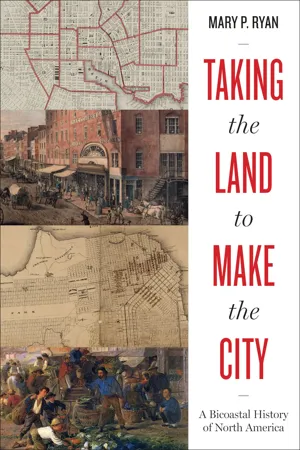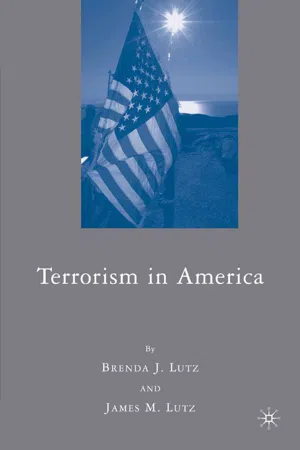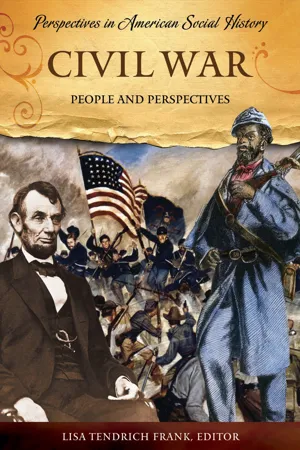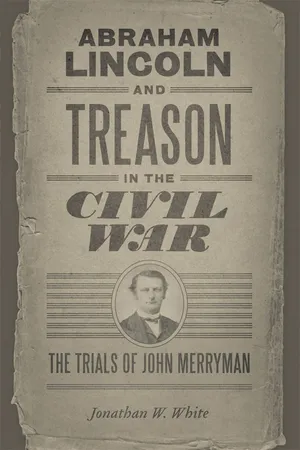History
Baltimore Riot 1861
The Baltimore Riot of 1861 was a violent clash between Confederate sympathizers and Union soldiers during the American Civil War. The riot erupted when Union troops attempted to pass through Baltimore on their way to Washington, D.C. and resulted in the deaths of several soldiers and civilians.
Written by Perlego with AI-assistance
Related key terms
1 of 5
5 Key excerpts on "Baltimore Riot 1861"
- eBook - ePub
Taking the Land to Make the City
A Bicoastal History of North America
- Mary P. Ryan(Author)
- 2022(Publication Date)
- University of Texas Press(Publisher)
Even in the face of Lincoln’s election and after other slave states had seceded, Baltimore, Maryland, straddled the deepening divide between North and South. Mayor Brown, joined by Governor T. H. Hicks, held a postelection rally in Baltimore and pleaded the cause of peace. When South Carolina called a convention of secessionists, Governor Hicks took evasive action. Since the Maryland Legislature was not in session at the time, Hicks simply failed to call up the General Assembly to consider withdrawing from the Union. When the tattered fabric of compromises between Confederate and Union states ripped apart at Fort Sumter on April 12, 1861, Baltimore found itself in a painfully vulnerable position, caught between the nation’s capital and the Mason-Dixon Line and on the essential railroad connection for transporting Union troops to the South. There were no casualties at Fort Sumter, although two Union soldiers died during the evacuation. So, ineluctably, Baltimore would become known as the historic site where “the first blood of the American Civil War was spilt” one week later. A stanza of the Maryland state anthem would memorialize that event as the “patriotic gore / that flecked the streets of Baltimore.”There is lore as well as gore in the standard accounts of what happened in Baltimore on April 19, 1861. Local historians remember the events with tales of both mayhem and heroism—of loyal southerners championing the Confederacy, on the one hand, and of benevolent ladies soothing the wounds of Union soldiers, on the other. Neither a regression to mob town nor a reincarnation of the Monumental City, the advent of the Civil War in Baltimore unfolded in the time-honored manner of street politics. The trouble began with the news that the 6th Massachusetts Voluntary Militia would pass through Baltimore en route to Washington. There is no doubt that many residents of the city were fiercely loyal to the Confederacy and determined to strike a blow against the advancing Yankees. On April 19, Confederate zealotry condensed in the headquarters of the Democratic Party, located in the customhouse just northeast of the President Street rail station. Eyewitnesses depicted a rowdy and foul-mouthed band of Confederate sympathizers streaming out from the customhouse and down to Pratt Street, where they welcomed the Yankees to Baltimore with catcalls, racial slurs, bricks, stones, an occasional musket shot, and their favorite epithet, “sons of bitches.” The local rancor was forceful enough to accomplish something that had not occurred at Fort Sumter: it provoked one frightened member of the Massachusetts militia company to fire into the hostile crowd, causing the first of those appalling seven-hundred-thousand-odd fatalities of the American Civil War. Retaliation farther down Pratt Street left two Union soldiers dead on the urban battlefield. When the battle ended, the fatalities were estimated at twelve civilians and four Union soldiers.20 - eBook - ePub
Loyalty on the Line
Civil War Maryland in American Memory
- David K. Graham(Author)
- 2018(Publication Date)
- University of Georgia Press(Publisher)
FIGURE 1.1. Rioting in Baltimore, April 19, 1861, by Currier & Ives (courtesy of the Library of Congress).The following day Hicks penned a letter to Secretary of War Cameron in which he outlined the challenges he was facing in the secessionist stronghold city. He confessed that “the rebellious element had the control of things. They took possession of the armories, have the arms and ammunition.” Lincoln wrote Hicks the same day requesting his immediate presence along with the mayor of Baltimore in Washington to discuss issues “relative to preserving the peace of Maryland.” The Baltimore Riot and the need to control “the rebellious element” in Maryland moved to the forefront of the federal government’s consciousness within the first few weeks of the Civil War.17The Baltimore Riot not only started speculation on Maryland’s loyalty; it was also often a point of contention for those who debated the state’s wartime position well into the twentieth century. The city, in particular, was on the lips of both Confederate and Union sympathizers. Those who believed in the Confederate cause upheld Baltimore as a shining example of devotion in the face of intense opposition. Conversely, Unionists loathed Baltimore and its citizens for their rebellious spirit. The riot added another dynamic to these debates and was used by both sides in an attempt to prove Maryland’s true Civil War identity.Hicks faced other pressing issues on the ground in Maryland and ultimately decided to move the General Assembly west to Frederick and discuss the course Maryland should take while Lincoln made plans for occupying and securing Maryland under federal control. The decision to move the legislature was due in part to federal occupation of Annapolis, and Hicks also later pointed to the large pro-Union population in Frederick as the primary factor in his decision. The session was called on April 22 in order to decide on a policy of secession or loyalty to the Union. On April 27, the Maryland Senate and House of Delegates resolved that the state would not secede and informed their constituents that any fears of such an action were “without foundation.” The legislative body understood they had “no constitutional authority to take such an action.” The General Assembly also approved a bill on behalf of the City Council of Baltimore “for the defence of the city, against any damage that may arise out of the present crisis.”18 - eBook - PDF
- J. Lutz(Author)
- 2007(Publication Date)
- Palgrave Macmillan(Publisher)
The outbreak of the Civil War, of course, involved a different kind of violence on a large scale, but even during the war, there were out- breaks of violence that had linkages with the terrorism of the earlier years. Newspapers were attacked and their presses destroyed for oppos- ing the war, and mobs made life uncomfortable for antiwar dissenters, and there were even occasional lynchings. 141 In 1863, New York wit- nessed the greatest urban riot of the nineteenth century in North America when protesters opposed to the new Conscription Act took to the streets. The rioters, largely Irish, attacked blacks to protest against the war and also to protest against blacks competing with them for jobs. The riot had elements of class animosity as well, since the law gave the rich the option of buying an exemption. The riots lasted for three days, and while the total number of dead was never fully deter- mined, it could have been as high as 1,200. 142 Control in the city was Before the Civil War 49 only reestablished after troops fresh from the victory at Gettysburg were rushed to the city. 143 The black population in the city declined by 20 percent in the aftermath of the riot as many of the survivors fled to other parts of the country. 144 These riots were at least partially effective as a form of ethnic cleansing and they had obvious links to previous terrorist attacks against free blacks and abolitionists. They could also have been a reaction to the violence inflicted upon Irish Catholics by the Know-Nothings and other nativist groups in the earlier years; Irish Catholics were now able to take the same tactic with free blacks. The rioters themselves paid a cost as somewhere between four hundred and two thousand of them died during the violence, often at the hands of the troops sent to maintain order. 145 Opposition to conscription was not restricted to New York City. - eBook - PDF
Civil War
People and Perspectives
- Lisa . Tendrich Frank(Author)
- 2009(Publication Date)
- ABC-CLIO(Publisher)
Attacked on the streets, in their homes, on the docks, and wherever they had sought shelter, New York’s black population absorbed the brunt of the attack. Only when Mayor George Opdyke requested and received state and federal aid to control the situation was order effectively restored. In all, officials confirmed 199 dead and at least 300 injured in the fighting, making the New York City draft riots the most deadly single incident of urban violence in American history. Although the issue of slavery did not represent the only cause of the Civil War it was certainly the most important. Urban blacks responded to war in much the same way whites did, except that they were not permit- ted to volunteer for military service until Congress passed the Militia Act in July 1862. But it was not until the Emancipation Proclamation took effect on January 1, 1863, that Northern blacks could rally to the flag in the same way whites did after Fort Sumter. At home, life for free blacks changed in the same way it did for white urbanites, although the stakes were almost always higher. Black workers were almost always the first to let go during troubled times and the last to be rehired as prosperity returned. Generally locked out of many of the skilled trades, their fortunes C H A P T E R 9 T H E U R B A N C I V I L WA R 163 rested on the need for unskilled and semiskilled labor. A strong undercur- rent of racism accompanied the black experience and on more than one occasion put the lives of black urbanites at considerable risk. To some extent, many whites blamed blacks and the issue of slavery for the war. This misplaced anger often contributed to a higher state of tension between black and white laborers. One event in Cincinnati in the summer of 1862 illustrates how racism, blame for the war, and economic competition contributed to an uncertain present and future for urban free blacks. - eBook - ePub
Abraham Lincoln and Treason in the Civil War
The Trials of John Merryman
- Jonathan W. White(Author)
- 2011(Publication Date)
- LSU Press(Publisher)
BALTIMORE IS TO BE THE BATTLEFIELD OF THE SOUTHERN REVOLUTION ” The Baltimore Riot and the Formationof Lincoln’s Habeas Corpus PolicyWhen Abraham Lincoln received word on April 14, 1861, that Fort Sumter had fallen into Confederate hands, he set to work with his cabinet to formulate a policy that would sufficiently respond to the crisis. Seven Deep South states had already seceded from the Union. Now these so-called Confederate States had attacked the nation’s flag, affronted the national honor, and forcibly seized federal property. The president needed to respond decisively. On April 15, Lincoln issued a proclamation calling forth seventy-five thousand militiamen from the states and summoning Congress to convene in special session on July 4, 1861.1Lincoln’s proclamation was greeted with disillusionment and anger across the Upper South. His call for troops was evidence to Virginians that he really sought the “subjugation of all who would not subscribe to the creed of the conqueror.” On April 17, the Old Dominion State voted herself out of the Union. Arkansas, North Carolina, and Tennessee soon followed. For Lincoln, the slaveholding border states of Delaware, Maryland, Kentucky, and Missouri now needed to be held at all costs. Indeed, Lincoln believed that losing the border states would mean losing “the whole game.”2 If Maryland fell to the rebels, the national capital would be impossible to defend.Maryland, a border slave state, sat in a precarious position in the spring of 1861. Geographically, Maryland linked the North to the nation’s capital. Strategically, northern soldiers could not reach the District of Columbia except by train through Maryland. The Philadelphia, Wilmington and Baltimore Railroad ran from Philadelphia to Baltimore, while the Northern Central Railway Company’s lines linked Harrisburg to Baltimore. From the west, the Baltimore and Ohio brought travelers to the Monumental City. Passengers on these trains could then head south to Washington on the Baltimore and Ohio Railroad from Camden Station, near the harbor.
Index pages curate the most relevant extracts from our library of academic textbooks. They’ve been created using an in-house natural language model (NLM), each adding context and meaning to key research topics.




